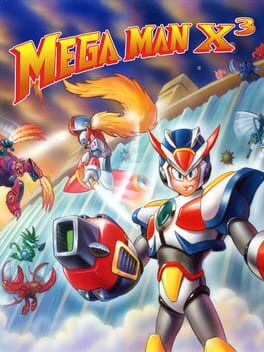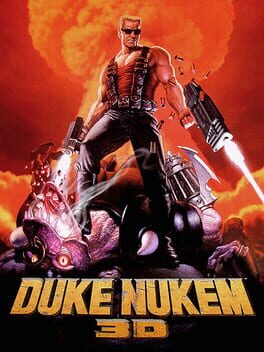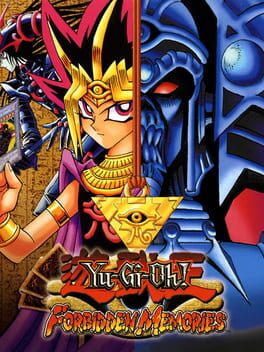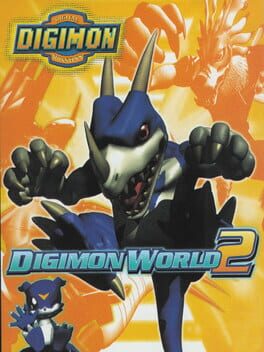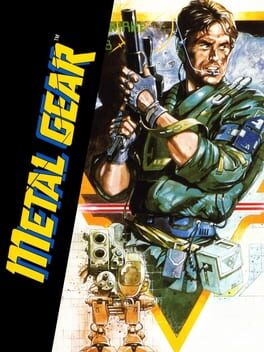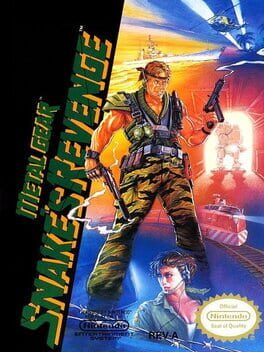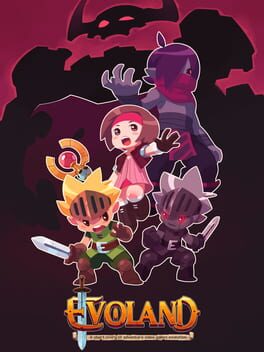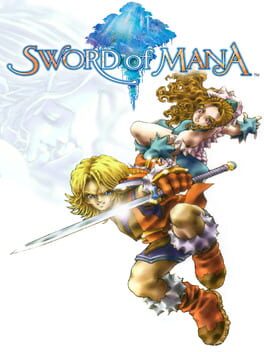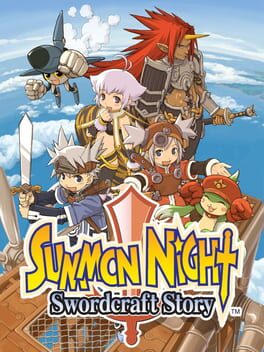Rei366
122 Reviews liked by Rei366
Mega Man X3
1995
Back to the ol’ grind, eh Capcom? Forgive me if my humorous jab fails to veil my sense of apathy, but I’ve thrown in the towel on the Mega Man X series at this point. When the first Mega Man X game successfully defibrillated the flatlining mainline series that clogged its arteries with too many entries well into the NES’s elderly years, Mega Man’s futuristic second wave of relevancy put the blue bomber on a pedestal that soared far over the heights of when the series was still blossoming a generation prior. Sure, it’s sensible to hold higher expectations for the X series compared to the mainline Mega Man games because they’re inherently privileged by technological advancements. However, it’s difficult to maintain momentum when the first 2.0 upgraded entry practically peaks the franchise’s formula. Every subsequent title is fated to falter as a result, and Mega Man X2 already couldn’t hold a candle to the first game’s glory. Upon playing X 2’s numerical follow-up, Mega Man X3, not only does the game hardly align on the quality of the first game-it proves the damning precedent that I alluded to regarding Mega Man X2.
Mega Man X3’s story arc pertains to X (and Zero) stopping the evil deeds of a new Sigma disciple. However, he was previously a benevolent man of scientific discovery like Dr. Cain and Dr. Light before him. Dr. Doppler, the supposed radical lunatic in question, postulates that the defiant, homicidal nature of the Mavericks isn’t due to a lack of direction, human mistreatment, or listening to Sigma’s resistance dogma in their formative years. Using his gifted scientific mind, Dr. Doppler creates some sort of robotic antidote to pacify the Mavericks as if it were merely a viral corruption in their circuitry. Dr. Doppler’s feats of scientific progress usher in the futuristic utopia that Dr. Cain had envisioned, and they’ve even erected a city called “Doppler Town” to commemorate his accomplishments. However, this far-fetched halcyon scenario is quickly dispatched when eight reploids, the requisite and totally coincidental number of hostile bosses for a Mega Man game, revert to their Maverick status once again and Dr. Doppler is instead fingered as the culprit for what is figured to be an intentional malfunction on his part. Sigma’s Maverick manifesto may mirror many science fiction stories revolving around the sentient autonomy of humanoid robots with artificial intelligence, but at least the themes are still rousing enough to be reused to great effect. Chalking the primary conflict of the series up to an infectious bug in the matrix that seems accidental just strips the narrative of its substance.
So yes, X is hitting the pavement once again to nip the new Maverick menace in the bud before it spreads. What selection of exotic, automaton animals have the developers chosen to represent as the pinnacle challenges of each level? Upon glancing at the menu, we have little clue because there are no descriptions of any of these Mavericks. All we see is four Mavericks aligned across the top and bottom of the screen per usual with a headshot and a still image of their domain. Not even the names of these burly robotic creatures are given. I can only surmise that this is a developer error and an inexcusable one at that. C’mon guys, even the vestigial first mainline Mega Man game at least provided the names of the Robot Masters in the menu! At this point, the stages of the X games are beginning to reuse topographical tropes we’ve already seen in the previous titles. Tunnel Rhino resides in another mine-oriented level buried deep in the underground trenches of the Earth, and the mud spurting from its pores will ensnare X into its viscosity like quicksand. Blizzard Buffalo’s stage is another frosty one but with an artificial cyclone machine exacerbating the turbulent winter overhead as an interesting new gimmick. Surges of electricity shimmy alongside the walls of Volt Catfish’s stage as recurring obstacles, and the “water” stage one would anticipate from Toxic Seahorse is more akin to the gunky sewage of a treatment plant. One would probably expect the two Mavericks designed after bugs to buzz around a humid, untamed jungle area similar to Neon Tiger, but Blast Hornet and Gravity Beetle are located in what appears to be a military complex and airship respectively. At least the submarine stage where X fights Crush Crawfish is somewhat water-oriented, even though it's highly improbable that anyone will find the strictly freshwater crustaceans in the vast, saltwater habitat of the ocean. Nitpicks about the themes surrounding these Mavericks aside, what is actually worth griping about is that several of the stages include plenty of fatal sections such as bottomless pits and beds of spikes at the end of falling that the player cannot anticipate unless they are psychic. These blindspots haven’t marred any Mega Man game since the very first one in 1987, and they’re just as unfair and poorly placed here as they were way back then.
The collective arsenal X can accumulate from the charred remains of the Mavericks are really nothing of note. The “Tornado Fang” and “Frost Shield” penetrate the armor of foes by drilling into their internal wires for double damage. The “Ray Splasher” trickles a flurry of bullets for a few seconds, and Toxic Seahorse’s “Acid Bubble” will corrode the metal right off of enemies once X gingerly plops it out of his arm cannon. The “Gravity Well” and “Parasitic Bomb” effectiveness seems entirely situational, and the “Triad Thunder” is insufficient as a close-ranged weapon and undependable as a long-ranged projectile. The weapon I found to be the most effective blaster substitute was the powerful, dual-wield “Spinning Blade,” but it expends more energy than a clunky air conditioner. If my summary of the boss weapons sounds curt, it's because I’d rather discuss another alternating array of firepower that X3 incorporates. By now, I’m sure every returning player is familiar with the mechs that X can pilot for a short period on the field, caving in cracked corners of land and the faces of enemies with its kinetic punches. In X3, X cannot jack an idle mech or violently take one from an enemy by force. Instead, the mech is summoned from one of the circular podiums littered throughout the levels. X is given the choice of selecting four different mechs with their own unique attributes. The Chimera module is the standard one featured in X with the aforementioned pension for fisticuffs, the Kangaroo module is similar to the one from X2 equipped with a charged attack, the Hawk module borrows the flight function from X2’s mech with rocket arms to boot, and the Frog module is strictly for underwater traversal. Having four flavors of the mech at X’s disposal to boost his offensive and defensive attributes sounds incredibly exciting and convenient on paper. However, the restrictions on this privilege damper its fun factor severely. Firstly, X has to unlock every one of the different mechs by scrounging around the hidden corners of the levels like any other upgrade. Even if X locates three out of four of them, they won’t be available to use until X finds the Chimera module dangling from an elusive room off the beaten path of Blast Hornet’s level. Why does this mech have higher precedence over the others when they all have their own vital utility? In addition, the platforms where a mech is materialized seem to be located in spots where it’s inappropriate to use them. I began to stop bothering with these mechs altogether because using them is sadly burdensome when it should’ve been a highlight of the game.
Unfortunately, the developer’s questionable methods extend to other upgrades found in the game. Remember when finding the energy heart units in the first Mega Man X was just a matter of slightly verging off the intended trajectory? X2 presented a few out-of-reach upgrades locked behind an additional step of using a Maverick’s weapon from another stage, but X3 increased the circuity of obtaining upgrades to the point of overload. For example, one heart unit is located behind a boulder suspended from the ceiling in Tunnel Rhino’s stage, and grabbing it requires both another boss weapon and one of the armor upgrades attached to a specific part of X’s body. Hardly any of the upgrades in X3 are acquired through honest attention on the player’s part. While we’re on the subject of the armor upgrades, X3 tweaks the defensive component of X’s progressive growth into something else that the developers didn’t entirely think through. As usual, armor enhancements are obtained by finding the body-sized capsules in the same obscured corners as the other upgrades. There’s one for each major piece of X’s exterior anatomy, and they all range heavily in opposite spectrums of usefulness. The body upgrade that cuts X’s damage input in half is a given, but the only other new factor of the armor upgrades I appreciate are the vertical leaps granted by the leg armor. Obtaining the helmet upgrade will begin each level with X scanning the layout of the stage and displaying it on a crudely rendered blocked map of the level that indicates where the remaining upgrades are located. This would’ve been a helpful feature only if there was another blipping dot of a different color on the map signifying X’s location in relation to the upgrade. The blaster upgrade is supposed to enhance the magnitude of the charge shot, but the upgrade in X3 rather generates a lopsided beam that sluggishly shoots in whatever direction it damn well pleases. In addition to these, the base upgrades can be augmented even further with the color-swapped pink capsules that insert a chip into the specific piece of armor to increase its effectiveness. Strangely enough, the player can abstain from collecting any of the chips which will reward them with a golden-plated suit of armor with all upgrades attached. Why would the player knowingly pursue the other upgrades beforehand if they were aware that they would come as a package deal by the end? The developers should’ve offered one pink capsule including the golden armor for the player’s efforts to gather up all of the armor upgrades. Actually, scratch that: I advise everyone reading this to forgo the shiny upgrade conglomerate to preserve the practicality of the charge shot.
X3 continues X2’s new trend of secret bosses sporadically interspersed between the levels. I’m glad that not catching the subtle clues of their appearances no longer has permanent, penalizing effects. However, it’s the additional bosses themselves that feel shoehorned in to continue this trend. Dr. Doppler is feeling a tad paranoid to X zeroing in on his location, so he sics two of his specialized henchmen goons called Bit and Byte to dispose of the blue Maverick hunter. While intended to be intimidating, the duo dynamic of these two cronies reminds me less of robotic Vincent and Jules and more of Badger and Skinny Pete. They’re entirely worthless. Meanwhile, one section beneath Crush Crawfish’s stage teleports X to a pathway to a spacious arena where he fights an uncanny apparition of Vile exactly as he did at the first climactic stretch to Sigma in the first game. Despite how irrelevant these supplementary bosses seem initially, vanquishing them somehow has some consequential weight to the remainder of the game. Instead of facing off against the tusked Press Disposer and the abstract Volt Kurageil mech, X will swap their encounters on the way up to Dr. Doppler to fight an unholy fusion of Bit and Byte called the “Godkarmachine O Inary” and Vile for the umpteenth time. However, the player’s completionist pension will not affect the final two bosses of Dr. Doppler and Sigma. Yes, Sigma’s influence still resonates strongly with the corrupted reploids. Except in this context, he exists as the computer virus that has been infecting the Mavericks, and not in a metaphorical manner of spewing anti-organic life rhetoric like a revolutionary propagandist. After X forces Doppler to face the errors of his ways through a swift beating, he tackles a tangible, lifelike version of Sigma in two phases that prove to be far more tense and demanding than the unpolished wireframe head seen in X2. The second phase is especially taxing if the player has inadvertently buggered their charge shot with its upgrade. After an exhausting duel, Sigma reverts to his rudimentary digital self to pull one more trick on X: flooding the arena with ascending lava to literally burn off the last slivers of his health before Zero swoops in and slices him in half of his saber. Excuse me, Sigma, but you’re not allowed to pull a stunt like this unless you are the pinnacle boss of a Metroid game. No, I’m not mad because it killed me unexpectedly (okay, reasonably a little).
Mega Man X3 is a predictable continuation of what the first X game established to advance the Mega Man formula. It expands on what the second X game introduced, albeit all of its aspects that I wasn’t particularly fond of, and makes them reasonably more manageable such as the loosened importance of the additional bosses. Besides the reinstated assets it carries over, the distinctive changes it makes are so bewildering it is as if the developers failed to test the game before releasing it. I’m still scratching my head as to why X can’t freely use the mechs he unlocks, the menu doesn’t list the names of the Mavericks, and so many more to list that I’m frankly appalled. It feels reactionary to assign Mega Man X3 the status of the nadir of the franchise. Still, it’s certainly the most flawed and irritating Mega Man game I’ve played thus far.
------
Attribution: https://erockreviews.blogspot.com
Mega Man X3’s story arc pertains to X (and Zero) stopping the evil deeds of a new Sigma disciple. However, he was previously a benevolent man of scientific discovery like Dr. Cain and Dr. Light before him. Dr. Doppler, the supposed radical lunatic in question, postulates that the defiant, homicidal nature of the Mavericks isn’t due to a lack of direction, human mistreatment, or listening to Sigma’s resistance dogma in their formative years. Using his gifted scientific mind, Dr. Doppler creates some sort of robotic antidote to pacify the Mavericks as if it were merely a viral corruption in their circuitry. Dr. Doppler’s feats of scientific progress usher in the futuristic utopia that Dr. Cain had envisioned, and they’ve even erected a city called “Doppler Town” to commemorate his accomplishments. However, this far-fetched halcyon scenario is quickly dispatched when eight reploids, the requisite and totally coincidental number of hostile bosses for a Mega Man game, revert to their Maverick status once again and Dr. Doppler is instead fingered as the culprit for what is figured to be an intentional malfunction on his part. Sigma’s Maverick manifesto may mirror many science fiction stories revolving around the sentient autonomy of humanoid robots with artificial intelligence, but at least the themes are still rousing enough to be reused to great effect. Chalking the primary conflict of the series up to an infectious bug in the matrix that seems accidental just strips the narrative of its substance.
So yes, X is hitting the pavement once again to nip the new Maverick menace in the bud before it spreads. What selection of exotic, automaton animals have the developers chosen to represent as the pinnacle challenges of each level? Upon glancing at the menu, we have little clue because there are no descriptions of any of these Mavericks. All we see is four Mavericks aligned across the top and bottom of the screen per usual with a headshot and a still image of their domain. Not even the names of these burly robotic creatures are given. I can only surmise that this is a developer error and an inexcusable one at that. C’mon guys, even the vestigial first mainline Mega Man game at least provided the names of the Robot Masters in the menu! At this point, the stages of the X games are beginning to reuse topographical tropes we’ve already seen in the previous titles. Tunnel Rhino resides in another mine-oriented level buried deep in the underground trenches of the Earth, and the mud spurting from its pores will ensnare X into its viscosity like quicksand. Blizzard Buffalo’s stage is another frosty one but with an artificial cyclone machine exacerbating the turbulent winter overhead as an interesting new gimmick. Surges of electricity shimmy alongside the walls of Volt Catfish’s stage as recurring obstacles, and the “water” stage one would anticipate from Toxic Seahorse is more akin to the gunky sewage of a treatment plant. One would probably expect the two Mavericks designed after bugs to buzz around a humid, untamed jungle area similar to Neon Tiger, but Blast Hornet and Gravity Beetle are located in what appears to be a military complex and airship respectively. At least the submarine stage where X fights Crush Crawfish is somewhat water-oriented, even though it's highly improbable that anyone will find the strictly freshwater crustaceans in the vast, saltwater habitat of the ocean. Nitpicks about the themes surrounding these Mavericks aside, what is actually worth griping about is that several of the stages include plenty of fatal sections such as bottomless pits and beds of spikes at the end of falling that the player cannot anticipate unless they are psychic. These blindspots haven’t marred any Mega Man game since the very first one in 1987, and they’re just as unfair and poorly placed here as they were way back then.
The collective arsenal X can accumulate from the charred remains of the Mavericks are really nothing of note. The “Tornado Fang” and “Frost Shield” penetrate the armor of foes by drilling into their internal wires for double damage. The “Ray Splasher” trickles a flurry of bullets for a few seconds, and Toxic Seahorse’s “Acid Bubble” will corrode the metal right off of enemies once X gingerly plops it out of his arm cannon. The “Gravity Well” and “Parasitic Bomb” effectiveness seems entirely situational, and the “Triad Thunder” is insufficient as a close-ranged weapon and undependable as a long-ranged projectile. The weapon I found to be the most effective blaster substitute was the powerful, dual-wield “Spinning Blade,” but it expends more energy than a clunky air conditioner. If my summary of the boss weapons sounds curt, it's because I’d rather discuss another alternating array of firepower that X3 incorporates. By now, I’m sure every returning player is familiar with the mechs that X can pilot for a short period on the field, caving in cracked corners of land and the faces of enemies with its kinetic punches. In X3, X cannot jack an idle mech or violently take one from an enemy by force. Instead, the mech is summoned from one of the circular podiums littered throughout the levels. X is given the choice of selecting four different mechs with their own unique attributes. The Chimera module is the standard one featured in X with the aforementioned pension for fisticuffs, the Kangaroo module is similar to the one from X2 equipped with a charged attack, the Hawk module borrows the flight function from X2’s mech with rocket arms to boot, and the Frog module is strictly for underwater traversal. Having four flavors of the mech at X’s disposal to boost his offensive and defensive attributes sounds incredibly exciting and convenient on paper. However, the restrictions on this privilege damper its fun factor severely. Firstly, X has to unlock every one of the different mechs by scrounging around the hidden corners of the levels like any other upgrade. Even if X locates three out of four of them, they won’t be available to use until X finds the Chimera module dangling from an elusive room off the beaten path of Blast Hornet’s level. Why does this mech have higher precedence over the others when they all have their own vital utility? In addition, the platforms where a mech is materialized seem to be located in spots where it’s inappropriate to use them. I began to stop bothering with these mechs altogether because using them is sadly burdensome when it should’ve been a highlight of the game.
Unfortunately, the developer’s questionable methods extend to other upgrades found in the game. Remember when finding the energy heart units in the first Mega Man X was just a matter of slightly verging off the intended trajectory? X2 presented a few out-of-reach upgrades locked behind an additional step of using a Maverick’s weapon from another stage, but X3 increased the circuity of obtaining upgrades to the point of overload. For example, one heart unit is located behind a boulder suspended from the ceiling in Tunnel Rhino’s stage, and grabbing it requires both another boss weapon and one of the armor upgrades attached to a specific part of X’s body. Hardly any of the upgrades in X3 are acquired through honest attention on the player’s part. While we’re on the subject of the armor upgrades, X3 tweaks the defensive component of X’s progressive growth into something else that the developers didn’t entirely think through. As usual, armor enhancements are obtained by finding the body-sized capsules in the same obscured corners as the other upgrades. There’s one for each major piece of X’s exterior anatomy, and they all range heavily in opposite spectrums of usefulness. The body upgrade that cuts X’s damage input in half is a given, but the only other new factor of the armor upgrades I appreciate are the vertical leaps granted by the leg armor. Obtaining the helmet upgrade will begin each level with X scanning the layout of the stage and displaying it on a crudely rendered blocked map of the level that indicates where the remaining upgrades are located. This would’ve been a helpful feature only if there was another blipping dot of a different color on the map signifying X’s location in relation to the upgrade. The blaster upgrade is supposed to enhance the magnitude of the charge shot, but the upgrade in X3 rather generates a lopsided beam that sluggishly shoots in whatever direction it damn well pleases. In addition to these, the base upgrades can be augmented even further with the color-swapped pink capsules that insert a chip into the specific piece of armor to increase its effectiveness. Strangely enough, the player can abstain from collecting any of the chips which will reward them with a golden-plated suit of armor with all upgrades attached. Why would the player knowingly pursue the other upgrades beforehand if they were aware that they would come as a package deal by the end? The developers should’ve offered one pink capsule including the golden armor for the player’s efforts to gather up all of the armor upgrades. Actually, scratch that: I advise everyone reading this to forgo the shiny upgrade conglomerate to preserve the practicality of the charge shot.
X3 continues X2’s new trend of secret bosses sporadically interspersed between the levels. I’m glad that not catching the subtle clues of their appearances no longer has permanent, penalizing effects. However, it’s the additional bosses themselves that feel shoehorned in to continue this trend. Dr. Doppler is feeling a tad paranoid to X zeroing in on his location, so he sics two of his specialized henchmen goons called Bit and Byte to dispose of the blue Maverick hunter. While intended to be intimidating, the duo dynamic of these two cronies reminds me less of robotic Vincent and Jules and more of Badger and Skinny Pete. They’re entirely worthless. Meanwhile, one section beneath Crush Crawfish’s stage teleports X to a pathway to a spacious arena where he fights an uncanny apparition of Vile exactly as he did at the first climactic stretch to Sigma in the first game. Despite how irrelevant these supplementary bosses seem initially, vanquishing them somehow has some consequential weight to the remainder of the game. Instead of facing off against the tusked Press Disposer and the abstract Volt Kurageil mech, X will swap their encounters on the way up to Dr. Doppler to fight an unholy fusion of Bit and Byte called the “Godkarmachine O Inary” and Vile for the umpteenth time. However, the player’s completionist pension will not affect the final two bosses of Dr. Doppler and Sigma. Yes, Sigma’s influence still resonates strongly with the corrupted reploids. Except in this context, he exists as the computer virus that has been infecting the Mavericks, and not in a metaphorical manner of spewing anti-organic life rhetoric like a revolutionary propagandist. After X forces Doppler to face the errors of his ways through a swift beating, he tackles a tangible, lifelike version of Sigma in two phases that prove to be far more tense and demanding than the unpolished wireframe head seen in X2. The second phase is especially taxing if the player has inadvertently buggered their charge shot with its upgrade. After an exhausting duel, Sigma reverts to his rudimentary digital self to pull one more trick on X: flooding the arena with ascending lava to literally burn off the last slivers of his health before Zero swoops in and slices him in half of his saber. Excuse me, Sigma, but you’re not allowed to pull a stunt like this unless you are the pinnacle boss of a Metroid game. No, I’m not mad because it killed me unexpectedly (okay, reasonably a little).
Mega Man X3 is a predictable continuation of what the first X game established to advance the Mega Man formula. It expands on what the second X game introduced, albeit all of its aspects that I wasn’t particularly fond of, and makes them reasonably more manageable such as the loosened importance of the additional bosses. Besides the reinstated assets it carries over, the distinctive changes it makes are so bewildering it is as if the developers failed to test the game before releasing it. I’m still scratching my head as to why X can’t freely use the mechs he unlocks, the menu doesn’t list the names of the Mavericks, and so many more to list that I’m frankly appalled. It feels reactionary to assign Mega Man X3 the status of the nadir of the franchise. Still, it’s certainly the most flawed and irritating Mega Man game I’ve played thus far.
------
Attribution: https://erockreviews.blogspot.com
Duke Nukem 3D
1996
Talk about a video game relic. Understanding Duke Nukem’s rampant popularity in the brief window of time where he was a bonafide video game celebrity was kind of a “you had to be there” type of scenario. Along with Pogs and Pauly Shore, Duke Nukem is now stamped into the era-defining pop culture staples of the mid/late 1990s that could not escape beyond the years of their initial relevance. For those who were sentient at that momentary period or are scholarly video game historians, we know that Duke Nukem’s legacy is synonymous with the vestigial early period of the burgeoning first-person shooter genre. When id Software was churning out the genre’s pioneering staples such as Wolfenstein and Doom in the early 1990s, Duke Nukem was designed as yet another 2D platformer protagonist in a time where they were as omnipresent in gaming as the mascots on name-brand cereal boxes. One quick relook at this gruff, cigar-smoking He-Man, who was already toting a soldier’s ragbag of firepower as is, gave the developers at 3D Realms some considerable clarity to refashion Duke into the nuanced spatial range of the third dimension with Duke Nukem 3D, hence the “D” following the sequential number in the title. As a result, 1996 was early enough to distinguish Duke as one of the first-person shooter’s founding fathers before a little game called Halo redefined the modern FPS standard indefinitely. Among the respected ranks of elder FPS titles, I’ve always positioned Duke Nukem 3D as the quintessential game over its primordial peers. There’s a certain element of charisma and refinement that Duke Nukem 3D exudes that earns its pinnacle placement in my mind.
One additional point to Duke Nukem 3D’s charisma is giving the titular character a voice to accentuate the personality of the muscle-bound figure behind those sunglasses so dark that the frames look like van windows. Admittedly, Duke Nukem isn’t the most dynamic or relatable character gaming has to offer. In fact, his uber-macho persona is so exaggerated that it comes across as a parody of the 1980s and 1990s action heroes that oozed pure testosterone from every sweating pore. But what a parody Duke is! If Bruce Willis, Sly Stone, Jean Claude Van Damme, and Steven Segal all ejaculated into a petri dish and the collective of hyper-masculine leading movie man semen was fertilized with an egg, the spawn conceived by this experimental breeding method still wouldn’t be as badass as Duke Nukem. Remember all of those Chuck Norris jokes that circulated around the internet in the latter half of the 2000s? All those tongue-in-cheek tributes to the Walker, Texas Ranger star and martial artist being an indestructible demigod of righteousness would have easily been just as applicable to Duke Nukem. Duke’s as rugged as a superhuman steel worker and approaches all hostility directed at him by beastly extraterrestrial invaders without flinching and quivering that clenched toothy grin of his. Duke is also a connoisseur of carnal pleasures with the ladies, and the harems he regularly coordinates would knock Wilt Chamberlain off as the supreme champion of the (sexual) scoring scoreboard. My favorite aspect of Duke Nukem as a character is that he’s a God at spewing one-liners. The game will automatically pull the Duke Nukem doll string at every other step he takes, and the bodacious single-sentenced lines of dialogue he utters with Jon St. John’s gravelly, monster truck rally radio voice providing the vocal delivery is music to my ears. Arguably, Duke Nukem’s golden quips are the aspect of this game that have been immortalized the deepest in the gaming zeitgeist thanks to their continual persistence as soundbites. I realize that since modern gaming journalism has expanded the conversation of social consciousness regarding the medium, Duke Nukem is a character commonly indicted as the epitome of a vicarious outlet to a misogynistic male-power fantasy, and I can’t deny that there is plenty of evidence to support the validity of this claim. Still, I refute this smudge to Duke’s integrity by stating that there might have been a time when gamers thought Duke Nukem was cool, but there was never a time when we all took him seriously. Duke Nukem is such an ostentatious embodiment of gaming camp that he reverts back around to actually being the coolest motherfucker ever depicted in pixels or polygons. I can’t say for certainty if the developers intended for Duke Nukem to be perceived through a lens of irony back in the 90s, however.
Despite his retrospective controversies, I still believe that Mr. Nukem is still an upstanding guy with a sense of justice in his heart. After all, the overarching objective of Duke Nukem 3D is an altruistic one, rescuing all the earthling babes that those alien bastards have abducted and reuniting them into the safe and protective arms of human warmth (his own, probably wrapped around them while they stroke his ironclad abs with their fingers). Whether it’s all human females, ones of a reproductive age bracket, or just the sexy ones aged 18-30 with supple breasts (sort of) is unclear. Regardless, Duke is willing to risk his biscuit on a valiant mission to retrieve the fairer half of Earth’s population from invading scum from outer space. Duke’s a lone wolf NSA assassin: the spitting image of J. Edgar Hoover’s wet dreams come to realization in an interactive medium. Or, Duke is not on a mission of government defense and is acting out against the alien forces as personal retribution for shooting down his ride en route to Los Angeles. Either or, the aliens have signed their death warrant by provoking the wrath of the last human they’d be able to handle.
Duke’s mission to save all the babes unceremoniously taken from Earth’s soil is divided into four chapters comprising around seven to ten individual levels. Instead of soaking up the sun’s rays in Malibu with a dozen loose, silicone-enhanced women, Duke now has to engage in a citywide firefight with the aliens in “L.A. Meltdown.” Doesn’t sound like Duke’s vacation to the City of Angels was deterred too drastically, no? The invasion at least grants him the opportunity to kick ass and chew bubblegum, which is one of many pop culture references that Duke coopts as a catchphrase. As he’s making mincemeat out of the squadron of alien forces, Duke will leave Los Angeles County to the California-spanning San Andreas fault located east in the desert. “Lunar Apocalypse” sends Duke slightly beyond the skies to a space station orbiting over the Earth, a massive headquarters operated by the alien army. Duke logically assumes that dismantling the oppressive establishment will be a critical blow to the alien opposition, but the eyesore is really a red herring that tests Duke’s gullibility. While Duke was distracted outside of Earth’s atmosphere, the aliens revved their task force to eleven back in LA, which Duke must revisit to remedy the increased rate of chaos in “Shrapnel City.” Without the pushback from Duke for a momentary period, the aliens accomplish their primary goal that coincides with the capturing of Earth’s human females. In the additional final chapter released with the “Atomic Edition” of the game, one candidate from the selection of unwilling female participants is impregnated with the seed of the alien’s queen, and “The Birth” as the chapter’s title connotes the distressful reality that they’ve succeeded. Who’s the lucky lady deemed to have such exceptional ovaries? We don’t know, but she most likely died during childbirth considering the horrifying creature that violently scratched and clawed its way out of her vagina. Because she’s the regal leader of this alien army and an overall abomination, Duke must expunge this matriarchal monstrosity from existence before her first birthday. While the four chapters align with some sort of narrative arc, the order in which the player tackles them is ultimately superfluous because they are given the option to select any chapter in the main menu. Still, what the chapter format provides is thematic cohesion between all of the individual levels. After hopping around several levels in space during the “Lunar Apocalypse” chapter, it genuinely feels as if a significant portion of progress has passed after Duke returns to civilization.
Whether the backdrop is the sunset strip or the outer limits, the levels of Duke Nukem 3D are bonded by a consistent design philosophy. Each level is technically a trek from point A to B, but that simple trajectory will be thwarted constantly by layers upon layers of circuity. A common integral aspect of the convolution is the need to find three key cards that block paths to progression exactly like in Doom. In fact, this general design philosophy reflects Doom’s methods so similarly that it’s practically like peering into a mirror image. Come to think of it, we don’t have any clear evidence that Duke Nukem isn’t the nom de guerre of “The Doom Guy” unmuffled now due to not having to protect himself with that hefty body armor from the oxygenless atmosphere of Mars or the noxious sulfur of Hell. Seeing how uncanny the levels are between the two FPS games, one could reasonably conclude that there’s only room for one king of the roost in this universe, but he’s the same person after all. While Duke Nukem 3D doesn’t make any meaningful strides of innovation to the FPS genre’s design philosophy, it avoids further accusations of cheap imitation of Doom by sprucing up the visuals. The opaque, cryptic visuals were sensible enough for Doom’s esoteric hellscape, as was the enclosed, repetitive dungeon design of Wolfenstein’s castle interior. The environments in Duke Nukem 3D, however, should have some semblance of realism because of its real-world setting, or at least a broad real-world setting for three out of four of the chapters. Hollywood Boulevard and the surrounding areas may not exude that sunny pomp the city is known for, as the invasion has apparently rendered it in nocturnal darkness. Still, the neon glow of an urban metropolis is discernible enough that the player recognizes that the environment is a concrete jungle with all of the familiar iconography. The levels in LA are packed with earthly establishments fitting for a first-world society. Duke will pass through a number of movie theaters, restaurants, office cubicles, and several assortments of bodegas to convey that sense of a lived-in environment. Duke will also find himself visiting strip clubs and the sets of pornographic films. These settings will give him ample room to flaunt his pension for shoving a couple of bucks in every surviving woman’s face, requesting them to “shake it, baby” to fan the flames of outrage. Even when they comply and show him their boobs, his critics are still going to label him as a sexist pig. A few levels in “The Birth” expound on the real-world setting theme by expanding the recurring places of interest into the length of fully-fledged levels. “Duke-Burger” is a fast food joint with the protagonist as its spokesperson, “Shop-N-Bag” is a supermarket that dwarfs the size of any Costco, and “Babeland” is a theme park that looks as if Disney acquired Hooters as one of their properties. Even when the levels in outer space can feasibly get by with minimal visuals in the foregrounds, every backdrop from the living quarters to the desolate docking bays is still beaming with pixelated detail. One recurring section in “Lunar Apocalypse” that is quite striking is the green, veiny corridors stretched over the perimeter of a wall or an entire room that stores the women deemed disposable by the aliens affixed in what look like cocoons made of mucus. Seeing their naked bodies writhing in excruciating discomfort with their feeble dialogue line of “kill me” is more disturbing than anything seen in Doom.
Naturally, the aliens will be a constant hindrance to reaching the goal point in the already convolutedly-mapped levels. While each of these imperialistic, intergalactic pests is all working under the same branch of some military, whatever planet they call home sure does house an eclectic ecosystem of species. Admittedly, the range of alien enemies is another aspect of Duke Nukem 3D that causes more comparisons with Doom. One can spot parallels between specific types of enemies between Duke Nukem 3D and Doom to strengthen the comparisons as well (ie. the Assault Troopers and the Imps and the Octobrains and Cacodemons). The array of enemies will also increase in difficulty as the game progresses. In “LA Meltdown,” Duke will blast through plenty of frail Assault Troopers and the LAPD who have been transformed into rabid boars who brandish shotguns while still wearing their blue uniforms. Some may be horrified by the sight of our boys in blue being overtaken by the aliens in this degrading fashion, but all they really did was swap the interior natures of these officers to their exteriors (this is a joke, please don’t hurt me). In the later chapters, these enemies will be joined by a legion of formidable foes that Duke needs to keep a mindful watch of around every corner. The floating, spherical Assault Commanders will blast rockets at Duke in enclosed spaces, and God help you if you encounter one of the Battlelord Sentries, who are durable enough with their hulking spike-covered armor pads and rail gun/mine launcher hybrid cannon to qualify as a miniboss. Encountering the bosses at the end of each chapter isn’t exactly a cinematic display, but their behemoth bodies will force Duke to dispense all of his ammunition into them. I especially enjoy the Overlord boss that climaxes “Lunar Apocalypse'' because Duke’s fatality maneuver that finishes off this boss for good sees him literally ripping his head off and shitting down his neck. Duke does not make idle threats, and the evidence of one of his most quoted sayings here is uproariously funny. For as extensive as Duke Nukem 3D’s enemies are, the game never overwhelms the player with an overabundance of them in one spot as a level gimmick like Doom tended to do.
Because every enemy spans a broad range of offensive and defensive attributes, Duke’s arsenal needs to match their eclecticism appropriately. Fortunately, as I’ve alluded to before, Duke’s as strapped as a Pee-Wee soccer team in a minivan. Of course, Duke’s first few weapons cover the basic firearms requisite for all FPS protagonists. The pistols, shotgun, and multispread chain gun are all effective in their own ways, but the joy of combat really kicks off after the first few levels. Grenades are great in situations where bushels of enemies in close quarters must be obliterated simultaneously, but the volatile nature of their timed impact can sometimes result in fatal cases of friendly fire. Why not take total control over the impact with pipe bombs, which always prove to be efficient and relatively more precise? Accompanying the RPG in the category of projectile explosive power is the Devastator weapon which fires several rounds of mini rockets with the fire rate of a machine gun. Laser Trip Bombs can be applied to upright surfaces to punish unobservant enemies, but sticking these to the walls while enemies are shooting at Duke isn’t exactly a practical method of combat. The special weapons that defy the laws of physics are the ones that are especially fun as one can imagine, and they’re surprisingly just as useful. The Shrinker weapon will reduce almost any common enemy to the size of a mouse, and they’ll tremble in fear before Duke pulverizes them with the crushing might of his foot. Duke’s left boot also comes into play after using the Freezethrower, the elemental opposite of a flamethrower that solidifies an enemy in solid ice before Duke shatters them into pieces. Alternately to the Shrinker, the Expander inflates an enemy to the point of bursting like a bomb that impacts all enemies directly around them. Duke Nukem may not possess something as awe-strikingly destructive as the BFG, but each weapon he carries is satisfying to use and will splatter the brains of enemies all over the streets of LA and beyond.
Duke Nukem is generally easier than the FPS games that influenced it on a fundamental level. As I’ve stated before, the pushback from enemies is relatively mild and manageable, unlike the feverish onslaught of Hell’s forces to contend with in Doom. However, the margin of error in Duke Nukem 3D is also razor thin, erasing all level progress made upon dying and making the player revert back to the beginning. This measure isn’t any less harsh here than it is in other FPS games that share the same sense of punitive discipline. On one hand, health kits of varying quantities are plentifully scattered across each level. This convenience also pertains to the array of items such as the mobile health kit and the protective resources like the boots and scuba gear to prevent Duke from harming himself with environmental hazards or drowning respectively. Duke can even restore his health by ten points by taking a whizz whenever he comes across a bathroom, and can fully restore his status by slurping the gushing pipe water upon breaking a toilet or urinal. The lethargic pace of the healing will skirt Duke’s patience, however, and it’s just kinda gross. With all of the liberties one can take to stave off the stiff death penalty, it all tends to be compromised anyway in some situations. God forbid Duke ever gets squished, and there are more cavernous pits to accidentally tumble down than there ever were on the empty planes of Mars or Hell. I understand that these levels are intended to be completed quickly, and every restart will prove quicker after every failure through familiarity. Still, I’ve always vocalized how unfair it is to send the player back to whence they started for any type of game, and the FPS genre is no exception.
As far as the oldest of the old-school FPS games are concerned, Duke Nukem 3D shines the brightest. This metaphor could include but is not limited to the scrupulous detail implemented to give the player reasonably perceptible environments or the intrepid attitude of its GigaChad protagonist that outshone the silent avatars that already flooded the genre in its early period. Duke Nukem 3D still has some jarring elements common across the early examples of the FPS genre, but I can confidently declare that its issues are the sins of the father. Some may chalk up Duke Nukem 3D’s legacy as channeling Doom under a different name, bolstering shallow attributes such as presentation and not much else: Au contraire, my skeptical friends. Duke Nukem 3D’s graphical sheen and vibrant energy make the FPS more joyous and accessible, which is certainly a stride in the genre’s evolution.
Hail to the king, baby!
------
Attribution: https://erockreviews.blogspot.com
One additional point to Duke Nukem 3D’s charisma is giving the titular character a voice to accentuate the personality of the muscle-bound figure behind those sunglasses so dark that the frames look like van windows. Admittedly, Duke Nukem isn’t the most dynamic or relatable character gaming has to offer. In fact, his uber-macho persona is so exaggerated that it comes across as a parody of the 1980s and 1990s action heroes that oozed pure testosterone from every sweating pore. But what a parody Duke is! If Bruce Willis, Sly Stone, Jean Claude Van Damme, and Steven Segal all ejaculated into a petri dish and the collective of hyper-masculine leading movie man semen was fertilized with an egg, the spawn conceived by this experimental breeding method still wouldn’t be as badass as Duke Nukem. Remember all of those Chuck Norris jokes that circulated around the internet in the latter half of the 2000s? All those tongue-in-cheek tributes to the Walker, Texas Ranger star and martial artist being an indestructible demigod of righteousness would have easily been just as applicable to Duke Nukem. Duke’s as rugged as a superhuman steel worker and approaches all hostility directed at him by beastly extraterrestrial invaders without flinching and quivering that clenched toothy grin of his. Duke is also a connoisseur of carnal pleasures with the ladies, and the harems he regularly coordinates would knock Wilt Chamberlain off as the supreme champion of the (sexual) scoring scoreboard. My favorite aspect of Duke Nukem as a character is that he’s a God at spewing one-liners. The game will automatically pull the Duke Nukem doll string at every other step he takes, and the bodacious single-sentenced lines of dialogue he utters with Jon St. John’s gravelly, monster truck rally radio voice providing the vocal delivery is music to my ears. Arguably, Duke Nukem’s golden quips are the aspect of this game that have been immortalized the deepest in the gaming zeitgeist thanks to their continual persistence as soundbites. I realize that since modern gaming journalism has expanded the conversation of social consciousness regarding the medium, Duke Nukem is a character commonly indicted as the epitome of a vicarious outlet to a misogynistic male-power fantasy, and I can’t deny that there is plenty of evidence to support the validity of this claim. Still, I refute this smudge to Duke’s integrity by stating that there might have been a time when gamers thought Duke Nukem was cool, but there was never a time when we all took him seriously. Duke Nukem is such an ostentatious embodiment of gaming camp that he reverts back around to actually being the coolest motherfucker ever depicted in pixels or polygons. I can’t say for certainty if the developers intended for Duke Nukem to be perceived through a lens of irony back in the 90s, however.
Despite his retrospective controversies, I still believe that Mr. Nukem is still an upstanding guy with a sense of justice in his heart. After all, the overarching objective of Duke Nukem 3D is an altruistic one, rescuing all the earthling babes that those alien bastards have abducted and reuniting them into the safe and protective arms of human warmth (his own, probably wrapped around them while they stroke his ironclad abs with their fingers). Whether it’s all human females, ones of a reproductive age bracket, or just the sexy ones aged 18-30 with supple breasts (sort of) is unclear. Regardless, Duke is willing to risk his biscuit on a valiant mission to retrieve the fairer half of Earth’s population from invading scum from outer space. Duke’s a lone wolf NSA assassin: the spitting image of J. Edgar Hoover’s wet dreams come to realization in an interactive medium. Or, Duke is not on a mission of government defense and is acting out against the alien forces as personal retribution for shooting down his ride en route to Los Angeles. Either or, the aliens have signed their death warrant by provoking the wrath of the last human they’d be able to handle.
Duke’s mission to save all the babes unceremoniously taken from Earth’s soil is divided into four chapters comprising around seven to ten individual levels. Instead of soaking up the sun’s rays in Malibu with a dozen loose, silicone-enhanced women, Duke now has to engage in a citywide firefight with the aliens in “L.A. Meltdown.” Doesn’t sound like Duke’s vacation to the City of Angels was deterred too drastically, no? The invasion at least grants him the opportunity to kick ass and chew bubblegum, which is one of many pop culture references that Duke coopts as a catchphrase. As he’s making mincemeat out of the squadron of alien forces, Duke will leave Los Angeles County to the California-spanning San Andreas fault located east in the desert. “Lunar Apocalypse” sends Duke slightly beyond the skies to a space station orbiting over the Earth, a massive headquarters operated by the alien army. Duke logically assumes that dismantling the oppressive establishment will be a critical blow to the alien opposition, but the eyesore is really a red herring that tests Duke’s gullibility. While Duke was distracted outside of Earth’s atmosphere, the aliens revved their task force to eleven back in LA, which Duke must revisit to remedy the increased rate of chaos in “Shrapnel City.” Without the pushback from Duke for a momentary period, the aliens accomplish their primary goal that coincides with the capturing of Earth’s human females. In the additional final chapter released with the “Atomic Edition” of the game, one candidate from the selection of unwilling female participants is impregnated with the seed of the alien’s queen, and “The Birth” as the chapter’s title connotes the distressful reality that they’ve succeeded. Who’s the lucky lady deemed to have such exceptional ovaries? We don’t know, but she most likely died during childbirth considering the horrifying creature that violently scratched and clawed its way out of her vagina. Because she’s the regal leader of this alien army and an overall abomination, Duke must expunge this matriarchal monstrosity from existence before her first birthday. While the four chapters align with some sort of narrative arc, the order in which the player tackles them is ultimately superfluous because they are given the option to select any chapter in the main menu. Still, what the chapter format provides is thematic cohesion between all of the individual levels. After hopping around several levels in space during the “Lunar Apocalypse” chapter, it genuinely feels as if a significant portion of progress has passed after Duke returns to civilization.
Whether the backdrop is the sunset strip or the outer limits, the levels of Duke Nukem 3D are bonded by a consistent design philosophy. Each level is technically a trek from point A to B, but that simple trajectory will be thwarted constantly by layers upon layers of circuity. A common integral aspect of the convolution is the need to find three key cards that block paths to progression exactly like in Doom. In fact, this general design philosophy reflects Doom’s methods so similarly that it’s practically like peering into a mirror image. Come to think of it, we don’t have any clear evidence that Duke Nukem isn’t the nom de guerre of “The Doom Guy” unmuffled now due to not having to protect himself with that hefty body armor from the oxygenless atmosphere of Mars or the noxious sulfur of Hell. Seeing how uncanny the levels are between the two FPS games, one could reasonably conclude that there’s only room for one king of the roost in this universe, but he’s the same person after all. While Duke Nukem 3D doesn’t make any meaningful strides of innovation to the FPS genre’s design philosophy, it avoids further accusations of cheap imitation of Doom by sprucing up the visuals. The opaque, cryptic visuals were sensible enough for Doom’s esoteric hellscape, as was the enclosed, repetitive dungeon design of Wolfenstein’s castle interior. The environments in Duke Nukem 3D, however, should have some semblance of realism because of its real-world setting, or at least a broad real-world setting for three out of four of the chapters. Hollywood Boulevard and the surrounding areas may not exude that sunny pomp the city is known for, as the invasion has apparently rendered it in nocturnal darkness. Still, the neon glow of an urban metropolis is discernible enough that the player recognizes that the environment is a concrete jungle with all of the familiar iconography. The levels in LA are packed with earthly establishments fitting for a first-world society. Duke will pass through a number of movie theaters, restaurants, office cubicles, and several assortments of bodegas to convey that sense of a lived-in environment. Duke will also find himself visiting strip clubs and the sets of pornographic films. These settings will give him ample room to flaunt his pension for shoving a couple of bucks in every surviving woman’s face, requesting them to “shake it, baby” to fan the flames of outrage. Even when they comply and show him their boobs, his critics are still going to label him as a sexist pig. A few levels in “The Birth” expound on the real-world setting theme by expanding the recurring places of interest into the length of fully-fledged levels. “Duke-Burger” is a fast food joint with the protagonist as its spokesperson, “Shop-N-Bag” is a supermarket that dwarfs the size of any Costco, and “Babeland” is a theme park that looks as if Disney acquired Hooters as one of their properties. Even when the levels in outer space can feasibly get by with minimal visuals in the foregrounds, every backdrop from the living quarters to the desolate docking bays is still beaming with pixelated detail. One recurring section in “Lunar Apocalypse” that is quite striking is the green, veiny corridors stretched over the perimeter of a wall or an entire room that stores the women deemed disposable by the aliens affixed in what look like cocoons made of mucus. Seeing their naked bodies writhing in excruciating discomfort with their feeble dialogue line of “kill me” is more disturbing than anything seen in Doom.
Naturally, the aliens will be a constant hindrance to reaching the goal point in the already convolutedly-mapped levels. While each of these imperialistic, intergalactic pests is all working under the same branch of some military, whatever planet they call home sure does house an eclectic ecosystem of species. Admittedly, the range of alien enemies is another aspect of Duke Nukem 3D that causes more comparisons with Doom. One can spot parallels between specific types of enemies between Duke Nukem 3D and Doom to strengthen the comparisons as well (ie. the Assault Troopers and the Imps and the Octobrains and Cacodemons). The array of enemies will also increase in difficulty as the game progresses. In “LA Meltdown,” Duke will blast through plenty of frail Assault Troopers and the LAPD who have been transformed into rabid boars who brandish shotguns while still wearing their blue uniforms. Some may be horrified by the sight of our boys in blue being overtaken by the aliens in this degrading fashion, but all they really did was swap the interior natures of these officers to their exteriors (this is a joke, please don’t hurt me). In the later chapters, these enemies will be joined by a legion of formidable foes that Duke needs to keep a mindful watch of around every corner. The floating, spherical Assault Commanders will blast rockets at Duke in enclosed spaces, and God help you if you encounter one of the Battlelord Sentries, who are durable enough with their hulking spike-covered armor pads and rail gun/mine launcher hybrid cannon to qualify as a miniboss. Encountering the bosses at the end of each chapter isn’t exactly a cinematic display, but their behemoth bodies will force Duke to dispense all of his ammunition into them. I especially enjoy the Overlord boss that climaxes “Lunar Apocalypse'' because Duke’s fatality maneuver that finishes off this boss for good sees him literally ripping his head off and shitting down his neck. Duke does not make idle threats, and the evidence of one of his most quoted sayings here is uproariously funny. For as extensive as Duke Nukem 3D’s enemies are, the game never overwhelms the player with an overabundance of them in one spot as a level gimmick like Doom tended to do.
Because every enemy spans a broad range of offensive and defensive attributes, Duke’s arsenal needs to match their eclecticism appropriately. Fortunately, as I’ve alluded to before, Duke’s as strapped as a Pee-Wee soccer team in a minivan. Of course, Duke’s first few weapons cover the basic firearms requisite for all FPS protagonists. The pistols, shotgun, and multispread chain gun are all effective in their own ways, but the joy of combat really kicks off after the first few levels. Grenades are great in situations where bushels of enemies in close quarters must be obliterated simultaneously, but the volatile nature of their timed impact can sometimes result in fatal cases of friendly fire. Why not take total control over the impact with pipe bombs, which always prove to be efficient and relatively more precise? Accompanying the RPG in the category of projectile explosive power is the Devastator weapon which fires several rounds of mini rockets with the fire rate of a machine gun. Laser Trip Bombs can be applied to upright surfaces to punish unobservant enemies, but sticking these to the walls while enemies are shooting at Duke isn’t exactly a practical method of combat. The special weapons that defy the laws of physics are the ones that are especially fun as one can imagine, and they’re surprisingly just as useful. The Shrinker weapon will reduce almost any common enemy to the size of a mouse, and they’ll tremble in fear before Duke pulverizes them with the crushing might of his foot. Duke’s left boot also comes into play after using the Freezethrower, the elemental opposite of a flamethrower that solidifies an enemy in solid ice before Duke shatters them into pieces. Alternately to the Shrinker, the Expander inflates an enemy to the point of bursting like a bomb that impacts all enemies directly around them. Duke Nukem may not possess something as awe-strikingly destructive as the BFG, but each weapon he carries is satisfying to use and will splatter the brains of enemies all over the streets of LA and beyond.
Duke Nukem is generally easier than the FPS games that influenced it on a fundamental level. As I’ve stated before, the pushback from enemies is relatively mild and manageable, unlike the feverish onslaught of Hell’s forces to contend with in Doom. However, the margin of error in Duke Nukem 3D is also razor thin, erasing all level progress made upon dying and making the player revert back to the beginning. This measure isn’t any less harsh here than it is in other FPS games that share the same sense of punitive discipline. On one hand, health kits of varying quantities are plentifully scattered across each level. This convenience also pertains to the array of items such as the mobile health kit and the protective resources like the boots and scuba gear to prevent Duke from harming himself with environmental hazards or drowning respectively. Duke can even restore his health by ten points by taking a whizz whenever he comes across a bathroom, and can fully restore his status by slurping the gushing pipe water upon breaking a toilet or urinal. The lethargic pace of the healing will skirt Duke’s patience, however, and it’s just kinda gross. With all of the liberties one can take to stave off the stiff death penalty, it all tends to be compromised anyway in some situations. God forbid Duke ever gets squished, and there are more cavernous pits to accidentally tumble down than there ever were on the empty planes of Mars or Hell. I understand that these levels are intended to be completed quickly, and every restart will prove quicker after every failure through familiarity. Still, I’ve always vocalized how unfair it is to send the player back to whence they started for any type of game, and the FPS genre is no exception.
As far as the oldest of the old-school FPS games are concerned, Duke Nukem 3D shines the brightest. This metaphor could include but is not limited to the scrupulous detail implemented to give the player reasonably perceptible environments or the intrepid attitude of its GigaChad protagonist that outshone the silent avatars that already flooded the genre in its early period. Duke Nukem 3D still has some jarring elements common across the early examples of the FPS genre, but I can confidently declare that its issues are the sins of the father. Some may chalk up Duke Nukem 3D’s legacy as channeling Doom under a different name, bolstering shallow attributes such as presentation and not much else: Au contraire, my skeptical friends. Duke Nukem 3D’s graphical sheen and vibrant energy make the FPS more joyous and accessible, which is certainly a stride in the genre’s evolution.
Hail to the king, baby!
------
Attribution: https://erockreviews.blogspot.com
Digimon World 2
2000
Metal Gear
1987
Snake's Revenge
1990
Evoland
2013
Completed with 100% of achievements earned. This is a fairly lightweight adventure/RPG, but with an attractively novel gimmick - the gradual 'evolution' of the game aesthetics and mechanics as you progress. Certainly it's far from the best of this type of adventure that you'll find, with limited plot and shallow mechanics, but its 'evolution' gimmick and relatively short length means it doesn't wear out its welcome and all in all this is a fun little experience.
Captain Tsubasa J
1995
Sword of Mana
2003
Not sure why Squaresoft decided that this game needed a full remake, but it differs so much from the original it's borderline unrecognizable. At least the (light) relationship to the Mana games is established for good. Otherwise, it's not that great, with a convoluted story that keeps dragging on for hours.
Disclosure: I was QA on this title
Summon Night is a cute little action game with some light crafting elements, a pokemon-esque attitude, and a tournament arc-based story. It works well for what it is, but most everything is fairly shallow, if satisfying.
Combat is as dead simple as it gets. Weapons have a single combo string and one or two extra moves (usually an upwards attack and a charged attack) and spells are simple line attacks, heals, and buffs. Movement feels sluggish at the start, but forces you to pay attention to your attacks, positioning, and blocks, which injects a little bit more depth into the combat. It is satisfying, but never really feels like more than block to get an opening and then spam your attacks.
Each weapon has a bit of a different playstyle that makes it rewarding to find one you like (and you can equip up to 3 at once for most combat). The game sort of pushes you toward swords, even though drill is obviously the coolest.
I like the sprite work in Summon Night quite a bit. Characters are cartoony and expressive and the pixels are very well done. Small touches like each weapon you craft showing up on your character add a bit more charm as well.
Crafting weapons is very simple, but it is sort of fun to progress through the largely linear weapon progression. I like that the crafting itself is core to the gameplay and also tightly tied to the narrative. The ideal here would be a few more steps towards the Monster Hunter model, where my choice of weapon has a lot of meaning, but like the rest of this game, this does well enough for what is needed.
Everyone loves a tournament arc! There aren't a ton of games that are just "go through this tournament" and it is cool to see it here. There are diversions, of course, but largely you are competing to become the next Craftlord, which basically just means 1v1'ing all the other crafts-kids in town. This is classic anime storytelling that the game leverages well to give the player motivation and to introduce a bunch of rivals/friends for you to interact with. The simple approach here works very well.
I like Summon Night for what it is, though it isn't quite interesting enough to hold my attention on this revisit. I do have a soft spot for it since it was the first game I worked professionally!
Summon Night is a cute little action game with some light crafting elements, a pokemon-esque attitude, and a tournament arc-based story. It works well for what it is, but most everything is fairly shallow, if satisfying.
Combat is as dead simple as it gets. Weapons have a single combo string and one or two extra moves (usually an upwards attack and a charged attack) and spells are simple line attacks, heals, and buffs. Movement feels sluggish at the start, but forces you to pay attention to your attacks, positioning, and blocks, which injects a little bit more depth into the combat. It is satisfying, but never really feels like more than block to get an opening and then spam your attacks.
Each weapon has a bit of a different playstyle that makes it rewarding to find one you like (and you can equip up to 3 at once for most combat). The game sort of pushes you toward swords, even though drill is obviously the coolest.
I like the sprite work in Summon Night quite a bit. Characters are cartoony and expressive and the pixels are very well done. Small touches like each weapon you craft showing up on your character add a bit more charm as well.
Crafting weapons is very simple, but it is sort of fun to progress through the largely linear weapon progression. I like that the crafting itself is core to the gameplay and also tightly tied to the narrative. The ideal here would be a few more steps towards the Monster Hunter model, where my choice of weapon has a lot of meaning, but like the rest of this game, this does well enough for what is needed.
Everyone loves a tournament arc! There aren't a ton of games that are just "go through this tournament" and it is cool to see it here. There are diversions, of course, but largely you are competing to become the next Craftlord, which basically just means 1v1'ing all the other crafts-kids in town. This is classic anime storytelling that the game leverages well to give the player motivation and to introduce a bunch of rivals/friends for you to interact with. The simple approach here works very well.
I like Summon Night for what it is, though it isn't quite interesting enough to hold my attention on this revisit. I do have a soft spot for it since it was the first game I worked professionally!
Honestly one of the rare console-to-handheld ports of this era where the handheld version holds its own or maybe even outstrips the primary version. Why aren't there more LotR-centric loot games?? It's pretty bare-bones and short, but those are expected for a GBA game and they honestly did more with the RPG trappings than I would have expected them to be able to in such a limited factor. And the art looks great and is highly legible, even when upscaled to 1080p in an emulator!
Of the five different versions of Harry Potter and the Philosopher's Stone video games, this is my favourite. Despite the grinding, odd sprite choices (I’m not sure why everyone is bright pink) and repetitive battles, it’s the most faithful to the source material, and I just find the idea of a turn based Harry Potter RPG so engaging.
On the down side, it’s basically baby’s first RPG. Losing a battle let's you keep any XP, and the lack of difficulty makes it a bit of a slog.
On the down side, it’s basically baby’s first RPG. Losing a battle let's you keep any XP, and the lack of difficulty makes it a bit of a slog.
